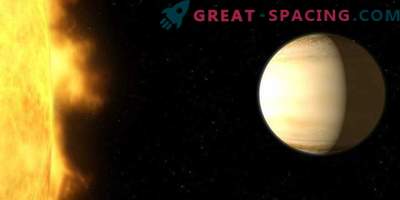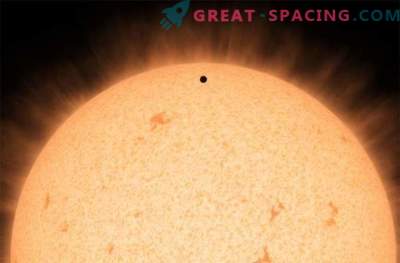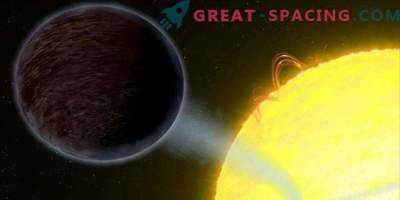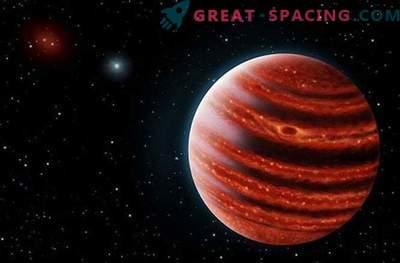
The HAT-P-26b atmosphere is represented by helium and hydrogen.
A new study may be the next step in understanding the process of formation and evolution of the planet in vast galaxies. Scientists were able to explore the “dark Neptune” - a planet whose dimensions resemble the planet of the same name in our system. The exoplanet is located 430 light years away from us. The latest data shows that its atmosphere is completely composed of hydrogen and helium, and the sky is devoid of clouds.
Such a composition indicates that it was formed closer to the main star or later in the development of the system. This finding proves that the atmosphere of exoplanets can be much more diverse than it is accepted to lie down.
The planet revolves around the star HAT-P-26 and is called HAT-P-26b. Data about it was collected at the moment when the object passed in front of the star and part of the stellar atmosphere is covered by a planetary one, which absorbs some wavelengths of light. The study of changes in the signature of starlight helped to determine the chemical composition. Hubble and Spitzer telescopes were used. The analysis showed that the atmosphere is devoid of clouds, but has water features. The latter parameter was used to determine metallicity (are there elements heavier than hydrogen and helium). Metallicity is important because it tells you exactly how the planet was formed.
The metallicity of Jupiter is 5 times larger than solar, and Saturn is 10 times larger. It seems that they should be filled with hydrogen and helium. But indicators of Uranus and Neptune are 100 times higher than solar metallicity. Researchers think that the last two planets appeared on the territory of a dust and gas disc rotating near an immature star. Because of this, they were hit by debris with heavy elements. But the first two were in parts with a higher temperature and were not subjected to such a number of blows.
The metallicity of the HAT-P-26b is 4.8 times the solar figure, which does not correspond to the model of our system. This causes additional interest of scientists.











































